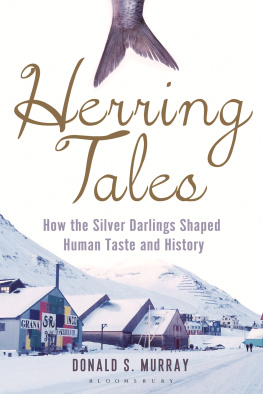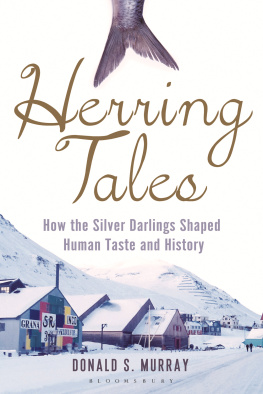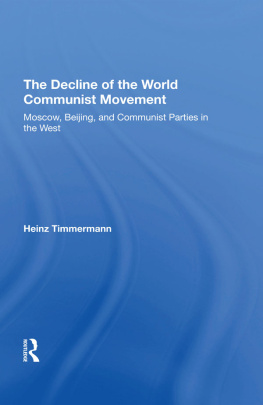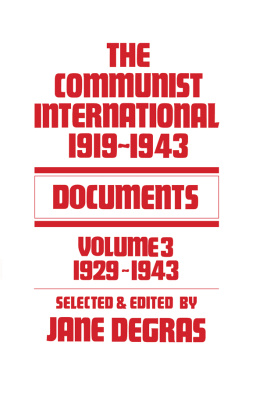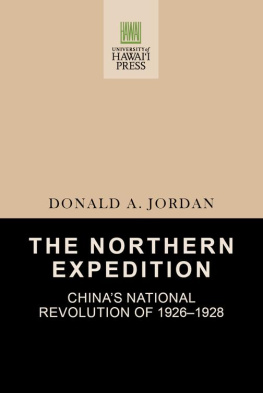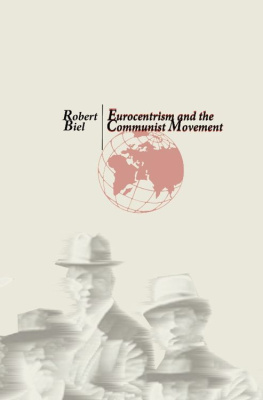CHINAS
LONELY
REVOLUTION
SUNY series in Chinese Philosophy and Culture
Roger T. Ames, editor
CHINAS
LONELY
REVOLUTION
The Local Communist Movement of
Hainan Island, 19261956
JEREMY A. MURRAY
Front cover image: An example of Li weavings, published in The Li Tribes of Hainan Island (Die Li-stmme der insel Hainan) by Hans Stbel.
Berlin: Klinkhardt and Beirmann, 1937. Reprinted with permission from publisher Klinkhardt and Biermann.
Published by State University of New York Press, Albany
2017 State University of New York
All rights reserved
Printed in the United States of America
No part of this book may be used or reproduced in any manner whatsoever without written permission. No part of this book may be stored in a retrieval system or transmitted in any form or by any means including electronic, electrostatic, magnetic tape, mechanical, photocopying, recording, or otherwise without the prior permission in writing of the publisher.
For information, contact State University of New York Press, Albany, NY
www.sunypress.edu
Production, Jenn Bennett
Marketing, Michael Campochiaro
Library of Congress Cataloging-in-Publication Data
Name: Murray, Jeremy A., author 1978
Title: Chinas lonely revolution: the local Communist movement of Hainan Island, 19261956 / Jeremy A. Murray
Description: Albany : State University of New York Press, [2017] | Series: SUNY series in Chinese philosophy and culture| Includes bibliographical references and index.
Identifiers: ISBN 9781438465319 (hardcover : alk. paper) | ISBN 9781438465326 (ebook)
Further information is available at the Library of Congress.
10 9 8 7 6 5 4 3 2 1
Voor onze ouders
For our parents
Els and Stuart Murray
Patricia and George Jakovich
CONTENTS
ACKNOWLEDGMENTS
M y advisors, Joseph Esherick and Paul Pickowicz, instructed me at the University of California, San Diego (UCSD) with wisdom, care, and inexhaustible patience. They provided structure, direction, and meaning to seven formative years, and it will take me many more years to bring to full fruition all of the seeds they planted with their guidance and examples. For now, I present this earnest effort with profound gratitude to Paul and Joe.
I have benefited from the inspired and inspiring teaching of many dedicated scholars. At UCSD, Roberto Alvarez, Suzanne Cahill, Takashi Fujitani, Lu Weijing, Richard Madsen, Jeremy Prestholdt, David Ringrose, Sarah Schneewind, Stefan Tanaka, and others enriched my learning. Ye Wa assisted me in making sense of the Peng Chengwan survey. Eugenia Lean and Madeleine Zelin at Columbia University encouraged me to continue my studies in Chinese history. At the State University of New York, Albany, Jim Hargett, Anthony DeBlasi, Susannah Fessler, and Charles Hartman launched me into the study of history and of China, which now brings me full circle to State University of New York Press! Thanks to series editor, Roger Ames, and also Jessica Kirschner for helping to guide this work to publication. I am also very grateful to Christopher Ahn and Jennifer Bennett for taking the manuscript through the production phase. I am grateful that Nancy Ellegate saw value in the work, and welcomed me on board. Thanks also to three anonymous readers who provided incisive comments. Xiaorong Han took great care in providing instruction and direction, and Gregor Benton encouraged me to continue the project as it wavered between dissertation and book. I have benefited from the expansive expertise of the above scholars, and I thank them for their instruction and guidance.
Funding for the project has come from the University of California Pacific Rim Research Program, the U.S. Department of Educations Jacob K. Javits Fellowship Program, the California State University San Bernardino (CSUSB) Office of Academic Research, the CSUSB Center for International Studies and Programs, and my CSUSB History Department. Joyce Hanson, Tim Pytell, Ward McAfee, Michal Kohout, and all of my CSUSB colleagues have made my time here constantly pleasant and rewarding.
The staff members of the Hainan Provincial Archives in Haikou were always eager and diligent in their support of my research through many visits. I have also benefited from the expert guidance and assistance of the staffs of the University of Oregon Special Collections and University Archives, the Hoover Institution, the Columbia Center for Oral History and C.V. Starr East Asian Library, the Missions Etrangres de Paris, the National Archives of Australia in Canberra, the UCSD library, and the CSUSB Pfau Library.
The graduates of the Modern Chinese History PhD program at UCSD comprise a wonderful group and I am very proud to count myself among them. For their help in countless ways, I thank Emily Baum, Jeremy Brown, Jenny Huangfu Day, Miriam Gross, Brent Haas, Christian Hess, Dahpon Ho, Ellen Huang, Matthew Johnson, Justin Jacobs, Judd Kinzley, Jomo Smith, Elya Zhang, Zheng Xiaowei, and many others.
I dedicate this work to my mother, Els Murray, and to my father, Stuart Murray. Their lives and work are my first and best inspiration. My siblings, Aaron Murray, Timothy Murray, and Rachel Turetsky, and their families, sustain me with their love. My great friend William Langran and his family welcomed me and mine in Hong Kong. The Monson family and the Tanner family have made life out west a little more like home with their warmth and generosity. My wife, Katherine, is my love, comfort, and constant joy, and along with Alexander, I can see her love and care woven throughout this book.
INTRODUCTION
T he best place to begin an examination of the Communist movement on Hainan island is with the proud and unique declaration made by its leaders in 1950: For twenty-three years, the Red flag did not fall ( Ershisan nian hongqi bu dao ). In no other major Chinese territory can this claim of continuity in the Communist revolution be made. From the Chinese Communist Partys (CCP) origins in Shanghai, to Jinggangshan and other base areas, to the hallowed ground of Yanan, all major territories of the CCP were overcome by the Nationalists, the Japanese, regional governors, or a combination of these, before they were later retaken and incorporated into the Peoples Republic of China (PRC). Hainans geographical insularity, and the contingency and perennial historical trends connected to this islandness, played a crucial part in shaping the distinctive history in the period examined here.
In Hainan, the Communist presence grew and shrank throughout the more than twenty-three years from its founding in 1926 until its incorporation in the PRC in early 1950. But even during times when there were only twenty-six known members of the Hainan movement, seeking refuge in the ancestral village of their leader, Feng Baiju (19031973), and even when they lost all communications with the mainland Communist leadership, they endured as a continuous force on the island. The persistence of Hainans revolution sometimes came at the price of ideological purity. Pragmatism, improvisation, and isolation became its defining features. The solitude and remoteness of Hainan shaped the movement, as Feng and others sank deep roots on the island, drawing on the movements local pride, as well as its unflagging and tenacious impetus to survival. In this work I aim to incorporate motivations such as regionalism and ethnicity into a study of the revolution as it was experienced there. Hainan Communist leaders and their mainland counterparts held widely divergent perspectives of the movements direction and its path forward. Some perceptions, or misperceptions, on both sides of the narrow Qiongzhou Strait that divided Hainan from the mainland, were grounded in perennial notions about one anothers culture. Some of these misperceptions and prejudices persist today, and continue to shape the way that Hainans history is remembered and written.


